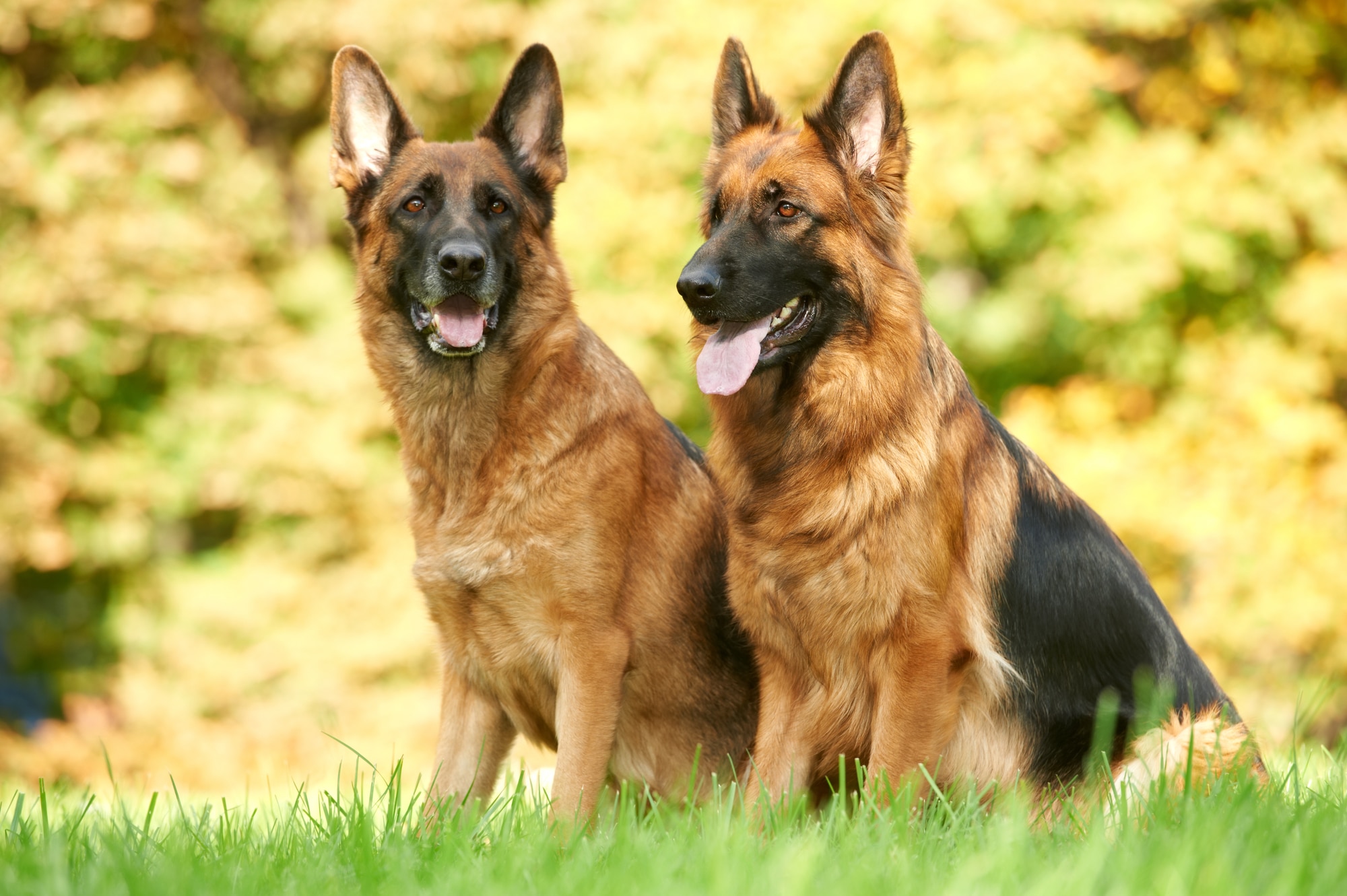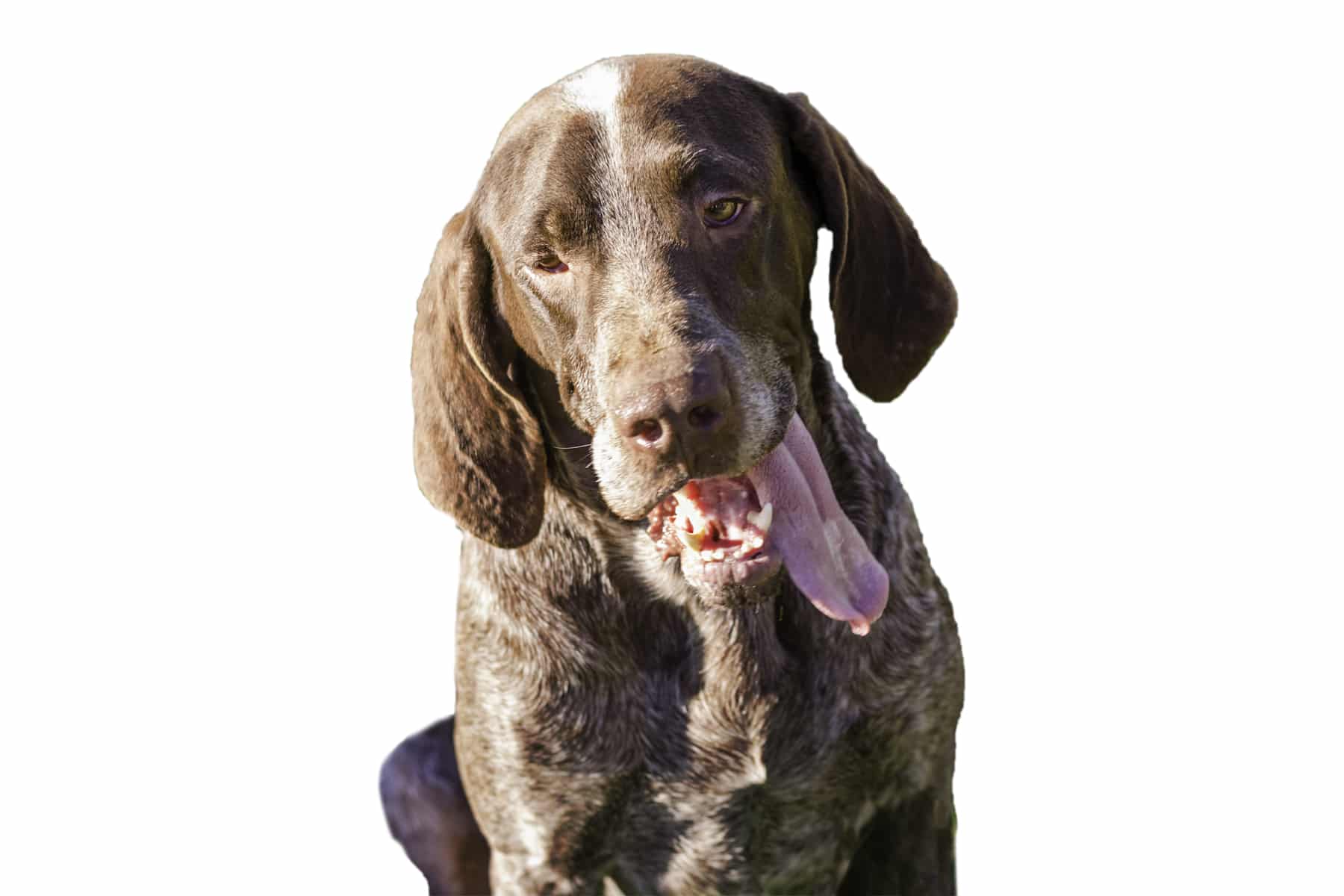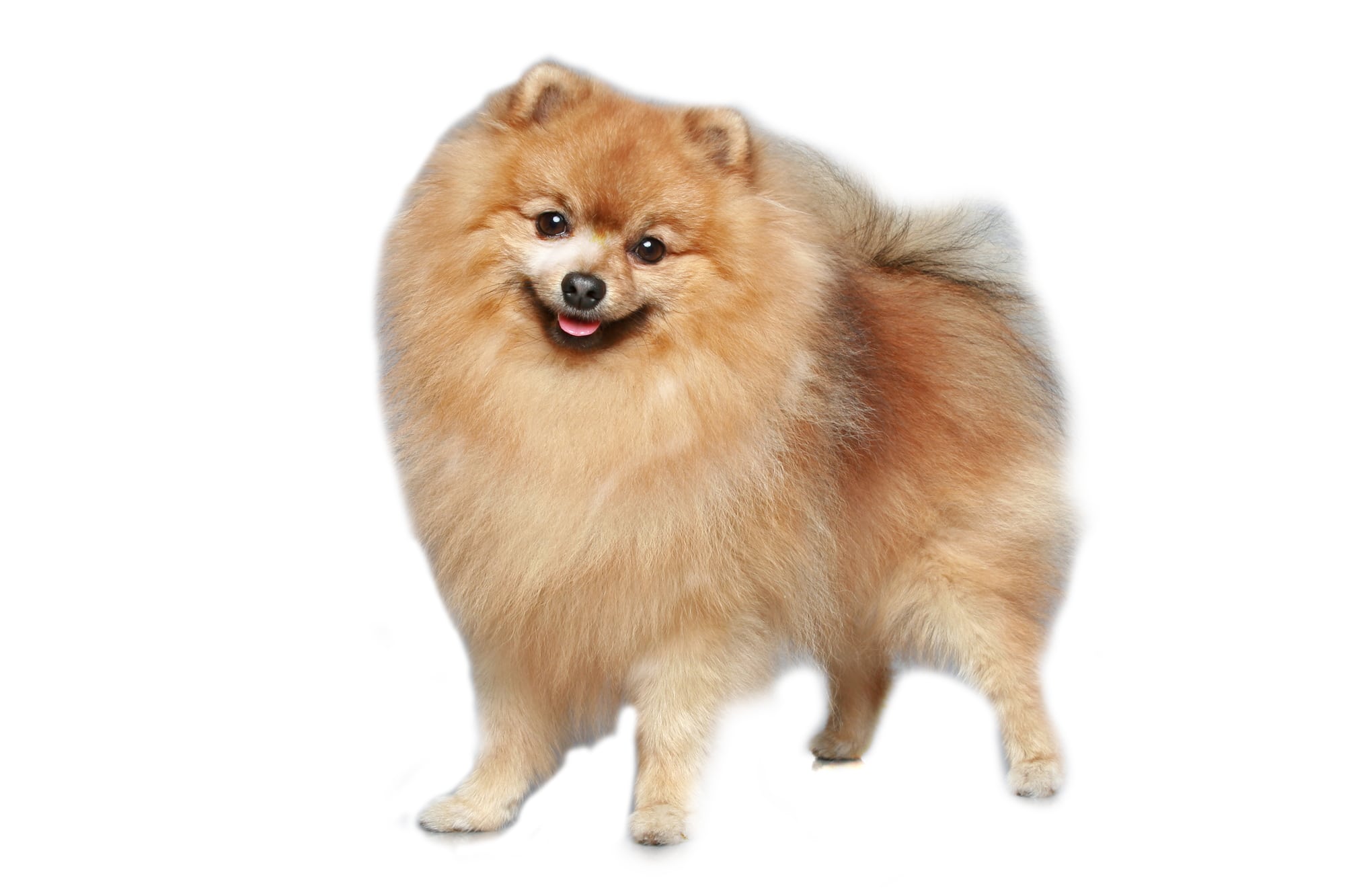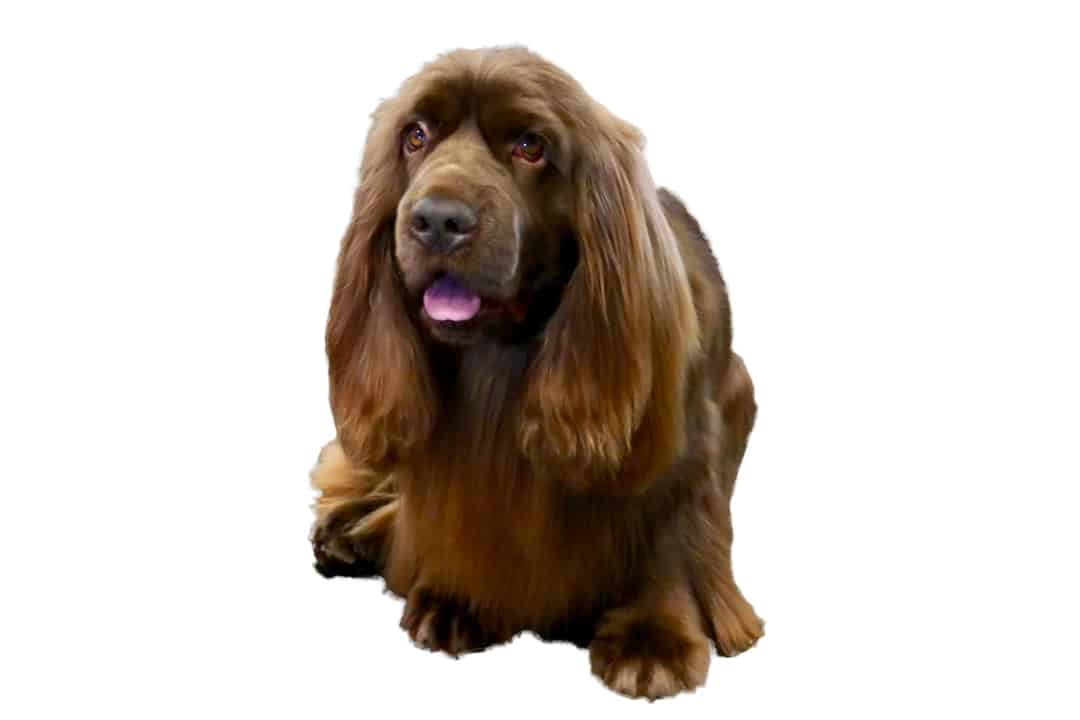German Shepherd




Temperament:
The German Shepherd is valued as an intelligent and enduring companion. The breed is also popular as a police and customs service dog. The German Shepherd protects home and family. It needs a lot of exercise. This is why you should devote enough time to this hard-working dog.
Characteristics
The German Shepherd Dog belongs to FCI Group 1, herding and driving dogs.
Permitted colors are: brown with dark saddle and dark mask, black, black with brown, yellow or grey markings and grey with dark cloudiness.
The coat of the German Shepherd is robust with a dense undercoat. The build is muscular, the trot should be ground covering.
One criticism of the German Shepherd is the sloping croup prescribed in the standard. This is particularly pronounced in the lines bred for beauty. This is often associated with hip dysplasia, which is common in this breed. Sheepdogs bred for performance generally have a less sloping croup. However, it is not possible to tell whether a dog is affected by the disease from external characteristics.
The German Shepherd is a sought-after working dog and is used in various areas. It has a high level of intelligence, a strong will to work and shows a close bond to "its" human. This makes it superior to other breeds in many areas.
Sheepdogs also have a prey drive that should not be underestimated. Their protective instinct is also often very pronounced. It is therefore essential to invest a lot of time in training the dog right from the start. It must be challenged and exercised in a manner appropriate to its species. An underchallenged herding dog will find its own work. This usually leads to problems and even behavioral disorders.
A German Shepherd should be trained consistently, but never by force. The dog wants to please of its own accord, so good training is a pleasure for both dog and human. If things do not work out as desired, it may be that the dog is overwhelmed. In this case, you need to take a step back and consolidate the last lessons learned.
These versatile dogs are suitable for almost all dog sports. German Shepherds also enjoy running on bicycles. To avoid damage, a health check should be carried out by a vet before starting training. In particular, hip and elbow joint dysplasia must be ruled out.
Even young growing dogs should not be overtaxed. Short but frequent walks and exercise sessions are preferable here.
Coat care:
Shedding:
Energy level:
Trainability:
Children suitable:
The right food
When choosing food, make sure that it contains high-quality ingredients, is balanced and meets your dog's requirements. Age, size or weight, activity and health status play an important role. You should follow the manufacturer's recommendations for the amount of food.
Treats can be fed in moderation. Natural, dried chews that support dental hygiene are best. The amount of snacks should be deducted from the basic diet.
Puppies can be fed 4-6 times a day. The number of meals should be gradually reduced to 2 per day until the dog is fully grown.
Due to its size and deep chest, the German Shepherd is one of the breeds that are particularly susceptible to the dreaded gastric torsion. It mainly affects older animals, but can also occur in young dogs.
When feeding, care should therefore be taken to ensure that the dog can rest after eating. It should not be fed before a planned activity. It also makes sense to let the dog rest for a while immediately after exercise and only then feed it.
Health & Care
The German Shepherd was bred for robustness for a long time. The first representatives of this breed were used as herding dogs. Even in bad weather and cold temperatures, they spent many hours a day or even continuously outdoors with their herd.
The coat of the German Shepherd still reflects its original purpose today. It is dense and yet easy to care for. During the shedding period, some dogs shed a lot of hair, but outside this period it is sufficient to brush the dog briefly every few days.
Ears, which are often sensitive in other breeds, are rarely a problem in German Shepherds. As they have erect ears, they are well ventilated and only become inflamed in exceptional cases. The only thing to watch out for is foreign objects. When the dog is running around in the meadow, a lump of grass or something else can get into the ear. If a foreign body cannot be removed without assistance, a vet should be consulted.
The claws do not need to be trimmed if they are sufficiently active, as long as they wear off by themselves. This may only be necessary for older or sick dogs. If you give your dog plenty of exercise and he walks a lot, you should also check his paws regularly for injuries. Small problems can be detected early and will not get worse.
From spring to fall, the dog's coat should also be checked for ticks. This can easily be combined with an extensive cuddle session. Your dog will thank you for it.
Suitable accessories
The German Shepherd should not only be challenged physically. Mental work is also important. Among other things, working with a retrieving dummy is suitable for this. This can be hidden, for example, and then searched for by the dog.
As long as the recall does not yet work reliably, a drag line is a good aid. It gives the dog the necessary freedom of movement. At the same time, it prevents him from putting himself in danger by moving too far away.
At home, he needs a place to lie down where he can retreat undisturbed. Various baskets or cushions are available from specialist retailers. Make sure that the resting place is easy to clean. Dogs can bring a lot of dirt with them, especially in bad weather.
Other accessories for your dog include a collar or harness, food and water bowl, tick tweezers, claw clippers and a transport box for transportation in the car.

Origin & History
The breeding of the German Shepherd began at the end of the 19th century. The Prussian court riding master Max von Stephanitz bred various herding dogs together. His aim was to breed what he considered to be an ideal working dog. For this reason, the animals' willingness to work and their temperament were paramount. Appearance played a subordinate role. Above all, it was important that the dogs were healthy and robust.
The German Shepherd Dog Association was founded in 1899. Gradually, the desired colors and other external characteristics were narrowed down. This is how today's German Shepherd Dog developed from the herding dog of that time.
After the Second World War, the international reputation of the breed suffered temporarily. During the National Socialist era, the dog was a symbol of supposedly "German virtues". Sheepdogs were used by the police and military as service dogs. Many war veterans therefore associated the breed with the war.
Today, fortunately, the German Shepherd is no longer the first dog associated with National Socialism. Instead, it is valued worldwide as what Max von Stephanitz originally intended it to be: a persistent and resilient working dog with many other positive characteristics.
After the war, two different types of German Shepherd developed. Some lines are primarily concerned with fulfilling the ideal of beauty set by the breeding association.
Other breeders place more value on the working dog characteristics. They therefore only select dogs with the appropriate working and protective instincts for breeding.
Despite partly different breeding goals, they are not two different breeds. Both breeds can be mated with each other, which is sometimes the case.





